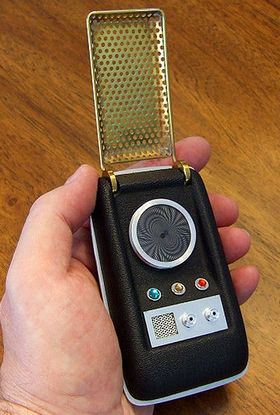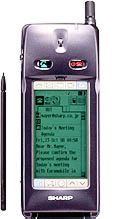This article is more than 1 year old
What Nokia (and everyone else) needs to learn about smartphones
Lessons from Star Trek
When Gene Roddenberry was devising the original Star Trek in 1965, he predicted humans would make common use of teleportation and faster-than-lightspeed travel. But one 23rd century innovation was either missing, or absent because nobody wanted it: converged electronic devices.
Cosmonauts who needed a data device got a tricorder, which was basically a PDA. Those who need voice calls got a communicator, which was a mobile phone. Sometimes you wonder if Roddenberry wasn’t on to something, and that these huge industries have been chasing a phantom, something that nobody really needs, for many years.
I don't think that's quite the case - but things have been more problematic than anyone envisaged. And the answer, perhaps, has been staring us in the face.

It's Convergence, Jim - but not as we know it
Yesterday I wrote how Nokia executives sound peevish and a bit fed up on their big day on Tuesday. Perhaps you would too, if you’d invented the smartphone 15 years ago, and you still sold the most smartphones - then saw somebody else come along and pocket all the profits. But there’s a factor here that almost everyone forgets, which has nothing to do with technology, design or logistics. It becomes obvious when you look at the history, because getting everything else “right” still doesn’t help. Only by taking a long view does it become quite striking.
Let there be data
Let’s go back to the early 1990s, with huge investments going into the first 2G digital cellular networks, which opened for business in 1992. It was clear to a lot of people that data would become part of the mobile deal. This informed thinking in Europe, Japan and the USA, and the development of CDMA and the first UMTS meetings in 1992.
Consumer deployments would be years of wrangling away, but once GSM took off in the mid-1990s it was evident that mobile data would most probably be brought to us by the same people who brought us those mobile networks. They would have such a strong economic and organisational advantages (they made money, had access to capital, had the best sites, a fast growing user base, and knew how to co-operate) that new market entrants touting some whizzy new new technology (for example an Iridium, or a Wi-Fi network) would almost certainly fail.
This tended to focus minds wonderfully. The PDAs of the early 1990s were also sprouting comms ports, even though the destinations were a PC (via a serial link) or a CompuServe or AOL. The Psions and Newtons were already “communicators”, they just weren’t integrated communicators. So the leading phone companies began to think about how to put data on a phone.

A smartphone from late 1997: Sharp's G1
At CeBIT in the mid-1990s, Nokia and Ericsson would happily show you could see “concept designs” of integrated touch screen communicators. When it began writing a new OS in 1994, Psion had the foresight to anticipate what phone manufacturers might one day need, and the resulting Epoc had an advantage in resource consumption and performance, as well as a rich and flexible framework for applications. The three largest phone companies all agreed to pool development on this joint venture, Microsoft swore vengeance, and a long, phoney war followed for several years.
But this happy consensus tended to obscure some issues which were acknowledged but not really addressed by anyone in the industry. The Roddenberry conundrum was still alive and well.
The data people wanted to make the experience as rich as possible, thinking of sophisticated devices that were really mobile computers, that also did voice. The other school of thought envisaged data as being a service, a bolt-on to a device which was still a voice phone first and foremost.
Naturally operators took the second view – and not always for Machiavellian reasons. They thought the untamed World Wide Web looked a little too much like the Wild Wild West, and not enough like a service. Current mobile data usage patterns show that they were as right as they were wrong. So they steered everyone towards a portal – their own portal, of course.
But while the operators thought in terms of services, they were uniquely incapable of delivering interesting or innovating services, lurched from WAP to walled gardens. Hopping out of the walled garden wasn't so difficult, but it was a minority pursuit.
Nokia, being Nokia, tried to please everybody. And why not, it had the scale to do so.
